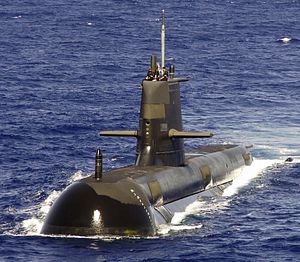Last month, Australia participated in submarine drills with the United States and Japan for the first time. The move was significant not only as a development in and of itself, but within the context of U.S.-Japan-Australia trilateral cooperation.
As I have noted before, apart from bilateral, multilateral and broader minilateral engagements, trilateral cooperation in particular has continued to be a focus in recent years, particularly around the various triangles involving the United States, Japan, Australia, and India (See: “Why the ‘New’ US Trilateral Dialogue With Japan and India Matters”).
Though these are far from the only trilateral arrangements that exist, they often get more attention not just for their own sake, but also because they have the potential to add up to the formal revival of the now-defunct U.S.-Australia-India-Japan Quadrilateral Security Dialogue or “quad” that had emerged during the George W. Bush years.
Routine meetings on U.S.-Japan-Australia trilateral cooperation have continued under the Trump administration. For instance, in August, the three sides met for the seventh Australia-Japan-U.S. trilateral security dialogue ministerial in Manila and issued a statement that talked not only about North Kora, but the broader importance of upholding the rule-based order including the South China Sea, countering terrorism and violent extremism, cybersecurity, regional connectivity, and the importance of the Association of Southeast Asian Nations (ASEAN) amid the organization’s 50th anniversary.
From 12 to 19 September, in yet another step in U.S.-Japan-Australia trilateral cooperation, the Royal Australian Navy (RAN) for the first time joined a trilateral submarine exercise with the US Navy (USN), and the Japan Maritime Self Defense Force (JMSDF).
The exercise, called Submarine Competition (SUBCOMP), was held in waters south of Japan, with the competition stressing each country’s ability to conduct various aspect of anti-submarine warfare (ASW). This year’s SUBCOMP featured four JMSDF submarines, the Los Angeles-class attack submarine USS Key West, and, for the first time, a RAN Collins-class submarine HMAS Dechaineux.
Commander Dan Sutherland, the commanding officer of Dechaineux, said the RAN was excited about its initial participation in the competition and added that he was looking forward to future exercises with the JMSDF and the U.S. Navy.
Of course, the participation of Australia in this exercise ought to be put into proper perspective. As I have noted previously, it is important not to attach too much importance to a single development within the context of a broader relationship or series of relationships even as we acknowledge incremental progress or occasional setbacks (See: “Australia-Japan Defense Ties Are Deeper Than a Sunken Submarine Bid”). Yet at the same time, within the broader context of strategic convergence between these three key states, firsts like these bear careful watching.

































